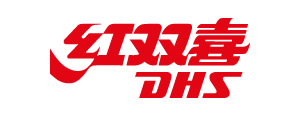What Are the 2 Olympic Lifts?
The IWF World Championships start on Tuesday 28th November, showcasing the best technique in Olympic Weightlifting. If you’re new to the world of weightlifting, let us introduce you to the two lifts: the Snatch and the Clean & Jerk.
For even the most casual of weightlifting observers, the technical differences between the snatch and the clean and jerk are obvious.
Despite these contrasting styles, there are key similarities between the two lifts that have not only helped them to become hallmarks of the Olympic Games and the IWF World Championships, but have also made them a staple part of weightlifters’ workouts worldwide.
To the untrained eye, these lifts might look like a mere test of brute upper-body strength.
However, both of these lifts use practically every muscle in the body. Additionally, as those who have trained for such exercises will testify, perfecting these lifts requires immense agility, balance, concentration, flexibility, speed, timing and explosive power, from head to toe.
Snatch
Having started out as a one-handed lift at the Olympic Games in 1896, the two-handed version was only unveiled on sport’s biggest stage 28 years later, giving the world a glimpse of one of the most graceful demonstrations of human power and agility.
The snatch is a controlled, balanced lift of the barbell from the floor to an overhead position in a single motion. Blink and you will miss it, but many an athlete’s hopes have been dashed by a miniscule misjudgement at one of the four stages of the lift – the set-up, the pull, the catch and the stand.
Starting off with the set-up, the athlete needs a wide grip in the squat position with straight arms, a flat back and hips higher than the knees.
The pull involves pushing with your legs, back and glutes, while keeping the bar close to your shins, but not touching them. Once the bar brushes your shins and is above your knees, it is crucial to accelerate the lift with as much power as possible, extending your ankles, knees and hips to rise onto your toes.
In receiving the bar as you extend – the catch – you need to pull yourself under the bar to drop into a full squat and then turn your wrists in order to push the bar above you, driving from the triceps and shoulders so that your arms are locked at the elbows.
The stand, once you have secured control of the barbell, should be steady and smooth until you are fully upright. You will need to extend your knees and hips at this stage, with the bar staying directly over your ankles and hips to maintain balance.
Deceptively, when the lift is executed perfectly, the heavy weight should feel light. But that is far easier said than done.
Clean & Jerk
The two-handed clean and jerk was on the programme at the very first modern Olympic Games in Athens in 1896 – some 28 years before the two-handed snatch made its Olympic debut.
It is markedly different to the snatch in that it is effectively a two-stage lift, allowing the athlete to regain his or her composure half-way through before pushing the barbell above the individual. Like the snatch, the athlete has to finish in a static position for the lift to count.
Athletes are able to lift about 20% more with their clean and jerk than their snatch.
Additionally, whereas the snatch is about a graceful, swift lift into an upright position in just over two seconds, the clean and jerk maintains an air of suspense and usually takes between 7 and 10 seconds – or even longer – from the start to finish position, including a 4 or 5-second gap in the middle when the audience watch on with baited breath.
The clean and jerk starts with a narrower grip, but the first and second pulls are very similar to the snatch lift. However, the key difference is in the final catch, with the athlete dropping under the bar into a front squat.
The ‘clean’ phase of the lift ends with the athlete standing upright with the barbell supported by the front of the shoulders, while the second phase – the ‘jerk’ – features a narrower stance, dropped elbows and then a shallow dip, converting the lift into an overhead press, with the legs generating the power.
—
Stay up-to-date with the 2017 International Weightlifting World Championships next week on IWF social channels.














